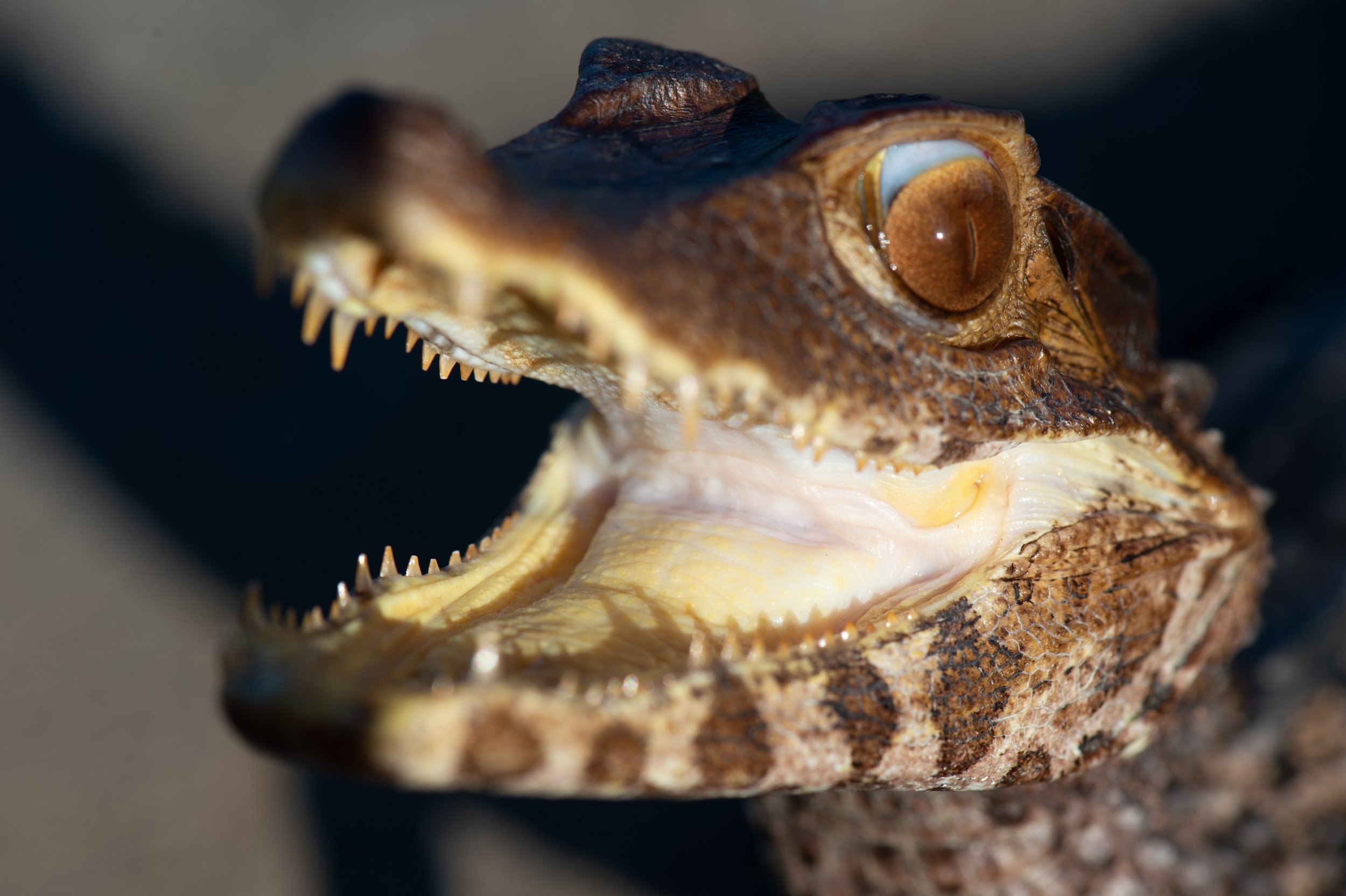
Cuvier’s Dwarf Caiman
(Paleosuchus palpebrosus)
The Cuvier's Dwarf Caiman (Paleosuchus palpebrosus) is the smallest species of crocodilian, native to the freshwater rivers and streams of northern and central South America, including Brazil, Venezuela, and Colombia. Growing up to 4.6 feet in length, males are slightly larger than females, but both are compact and well-adapted to life in dense, forested habitats. Their tough, armored skin offers protection from predators, and their diet consists of fish, amphibians, insects, and small vertebrates. Known for their shy and reclusive nature, dwarf caimans are primarily nocturnal, using the cover of night to hunt. They lay clutches of 10 to 25 eggs, which incubate for about 90 to 110 days. Despite habitat disturbances, their populations remain stable, earning them a status of Least Concern on the IUCN Red List. With a lifespan of up to 40 years in the wild and even longer in captivity, these fascinating reptiles are a remarkable example of adaptability in the crocodilian family.
IUCN Status: Least Concern
Range: Northern and central South America, including countries like Brazil, Venezuela, Colombia, Ecuador, Peru, the Guianas, and Bolivia.
Habitat: Freshwater rivers, streams, and flooded forests, particularly in forested areas with fast-moving water. They are often found in habitats with dense vegetation for cover.
Lifespan: 20 to 40 years in the wild; up to 60 years in captivity.
Size: Males: Up to 4.6 feet (1.4 meters) Females: Up to 3.9 feet (1.2 meters) They are the smallest species of crocodilian.
Diet: Primarily carnivorous, feeding on fish, amphibians, insects, crustaceans, and small vertebrates like birds and mammals. Juveniles eat more invertebrates, while adults shift to larger prey.
Clutch Size: 10 to 25 eggs per clutch.
Incubation: Approximately 90 to 110 days, depending on environmental conditions like temperature and humidity.
Life in The Water
The Cuvier's Dwarf Caiman is perfectly designed for life in its aquatic environment, with a variety of features that reflect the Creator’s wisdom in adapting creatures to their habitats. Its streamlined, compact body allows for efficient movement through water, while its long, muscular tail serves as a powerful propeller, propelling it swiftly and silently through fast-moving streams and rivers. Its eyes and nostrils are positioned high on its head, enabling it to remain mostly submerged while still being able to see and breathe, a key adaptation for both hunting and avoiding danger. Additionally, the nictitating membrane protects its eyes when submerged, ensuring clear vision and comfort. These features, along with its sensitive dome pressure receptors, demonstrate a flawless design that equips the dwarf caiman to thrive in its watery habitat, reflecting the Creator’s perfect provision for each of His creatures.
Amazing Design
-
The palatal valve of the Cuvier's Dwarf Caiman is a specialized, one-way valve located at the back of the mouth, demonstrating God’s thoughtful design for aquatic life. This valve allows the caiman to capture prey underwater without swallowing water itself. When the caiman closes its jaws around prey, the palatal valve seals off the throat and prevents water from entering, ensuring that it can swallow its catch without drowning. This feature is especially crucial in fast-moving waters where the caiman hunts, as it can snap its jaws shut quickly and effectively without risk of water flowing into its lungs. The palatal valve is just one of many remarkable adaptations that allow the dwarf caiman to thrive in its aquatic environment, showcasing the Creator’s wisdom in equipping each creature with the tools it needs for survival.
-
The Cuvier's Dwarf Caiman is equipped with a remarkable feature known as the nictitating membrane, a transparent third eyelid that showcases God’s thoughtful design in protecting and providing for His creatures. This membrane acts like built-in goggles, sliding over the caiman’s eyes when it dives underwater, allowing it to see clearly while shielding its eyes from debris and potential harm. Not only does this adaptation help the caiman hunt for fish and other prey with precision, but it also keeps its eyes moist and protected on land. The dual purpose of the nictitating membrane—offering both clarity and protection—reflects the Creator’s wisdom in designing animals with exactly what they need to thrive in their environments. This small yet vital feature highlights the intricate care God put into even the finest details of His creation.
-
The Cuvier's Dwarf Caiman is equipped with specialized dome pressure receptors on its snout, a unique adaptation that showcases God's attention to detail in His creation. These small, sensitive bumps, also known as integumentary sensory organs, allow the caiman to detect subtle vibrations and changes in water pressure, helping it navigate its environment and hunt effectively. Whether sensing the movement of prey or detecting disturbances caused by predators, these pressure receptors provide the caiman with enhanced awareness of its surroundings, even in the murky waters where visibility may be limited. This adaptation allows the caiman to hunt with precision, feeling the presence of fish and other small creatures before they are seen or heard. It is yet another example of how God has equipped His creatures with remarkable abilities tailored to their specific needs, ensuring they thrive in their environments.
Living with Dinosaurs?
It is commonly taught that crocodilians, have ancient origins and are often referred to as "living fossils" because their ancestors are believed to have lived alongside dinosaurs. According to the evolutionary worldview, crocodilians first appeared around 200 million years ago during the Late Triassic period, surviving major extinction events that wiped out the dinosaurs. This idea suggests that their rugged design and adaptability allowed them to endure dramatic changes in Earth's climate and ecosystems over millions of years. However, from a biblical perspective, crocodilians were created by God on Day 6 of creation, alongside other land animals, only thousands of years ago. Their well-adapted design and resilience are not the result of slow evolutionary changes but rather the result of God’s intentional creation, equipping them perfectly for their environments from the very beginning. Their fossil record simply reflects the catastrophic events of the global Flood, which rapidly buried many creatures, preserving evidence of their existence in the layers of sediment we find today.
Osteoderms
The osteoderms in caimans, including the Cuvier's Dwarf Caiman, serve multiple vital purposes, reflecting the intricate design of these creatures. These bony plates are embedded in the skin, forming a tough, armor-like defense that protects the caiman from predators and environmental hazards, such as sharp rocks or debris in fast-flowing rivers. Beyond protection, osteoderms also play a role in thermoregulation. By absorbing heat from the sun and transferring it to the caiman's body, they help regulate its temperature—critical for cold-blooded reptiles. Some studies suggest osteoderms may even act as calcium reservoirs, storing minerals that can be used in times of scarcity, such as during the egg-laying process. The multifunctional nature of osteoderms highlights the Creator’s wisdom in providing caimans with tools that not only ensure survival but also enable them to thrive in diverse and challenging environments.





